#M87*
Explore tagged Tumblr posts
Text
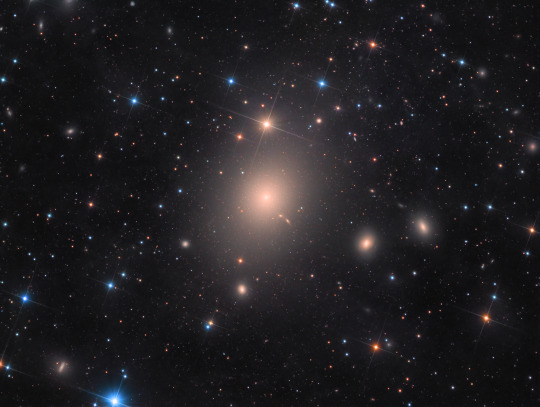
M87 // Rolf Olsen
M87, also called Virgo A, is an extremely radio-loud galaxy, meaning it emits a lot of light in the radio. The source of this radio? Likely a supermassive black hole at its core!
This black hole, called M87* (M87-star), is about 6 billion times the mass of the Sun and has a size of about 120 AU, or about 3 times the distance between the Sun and Pluto!

M87* was the first black hole to ever be directly imaged, a task accomplished with the Event Horizon Telescope (EHT) in 2019. This telescope works by combining the light-gathering power from several radio telescope across the world, effectively making a telescope as large as the Earth itself!
The black hole is currently swallowing up material and has a ring of highly ionized gas around it (shown in orange in the inset). Sometimes the black hole "burps" and emits a jet of matter. This jet currently measures about 5,000 light years long moving at about 85% the speed of light.
#astronomy#astrophotography#messier marathon#galaxy#elliptical galaxy#messier#messier 87#M87#Virgo A#NGC 4486#Arp 152#black hole#event horizon telescope#EHT#M87*#virgo
39 notes
·
View notes
Text
Happy Birthday to this photo of M87* -- the first image of any black hole ever!

0 notes
Text
EHT's global collaboration unveils magnetic fields and particle dynamics around M87* black hole using circular polarization. This breakthrough sheds light on matter consumption and jet formation, showcasing the consortium's pivotal role in unraveling cosmic mysteries.
#EHT#global collaboration#magnetic fields#particle dynamics#M87*#black hole#circular polarization#matter consumption#jet formation#cosmic mysteries
0 notes
Text

206 notes
·
View notes
Text

Astronomers using Hubble have discovered that the blowtorch-like jet blasting from a supermassive black hole at the core of galaxy M87 (left) seems to cause stars to erupt along its trajectory (right): https://bit.ly/3XwMsiu
#space#astronomy#stsci#science#nasa#universe#hubble#hubble space telescope#hubble telescope#black hole#M87
74 notes
·
View notes
Text










Post it for fun, why not
#rewrite sonic#insanity sans#dusttale#m87#murder drones#fell sans#classic sans#swap sans#underswap#underfell#murder drones tessa#undertale#murder drones thad#md thad#uzi doorman#psychopomp game#md uzi#n murder drones#n md#md panic au#tdd fundraiser#nyx panic au#pizza tower#sans au#papyrus
30 notes
·
View notes
Text
Alright, so, black holes right?
Most people have probably seen this astOUNDING image of the black hole at the center of the M87 galaxy - the first real picture of a black hole.
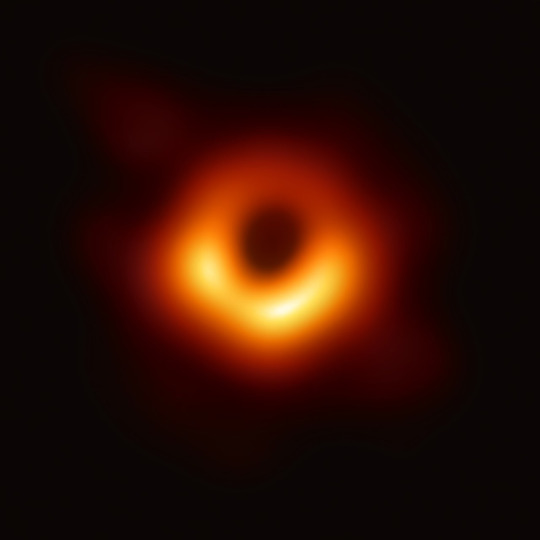
It may look like a blurry orange donut, but you gotta understand, this was and still is a hugely impressive achievement. At a black hole's event horizon, the escape velocity (or the speed at which something has to travel to escape the body's gravitational pull) is faster than the speed of light. By definition a black hole cannot be directly observed. Imaging the shadow of M87* required using eight ground-based radio telescopes all over the world, working together as an interferometer - or as though they were one single telescope the size of the entire planet.
So that's fucking cool in its own right, but how did we know that black holes existed before 2019 when we could actually "see" one? How do we detect something that reflects no light when we DON'T have a simulated telescope the size of Earth? The answer is gravity.
We think that most large galaxies have supermassive black holes at their centers, left over from their chaotic infancies when hundreds of thousands of early stars collided and then collapsed, and then kept colliding. To give you an idea of what we mean by "supermassive", the black hole at the center of the Milky Way, Sagittarius A* (pronounced "A-star"), is about 4 million times the mass of our sun. And that's SMALL.
So while black holes aren't the horrible all-consuming reality-guzzling unmakers of creation that science fiction likes to paint them as - we aren't in any danger whatsoever from Sagittarius A*, now or ever - they CAN get big enough to really throw things around. So we looked for objects moving under the influence of . . . nothing.
This gif is a years-long timelapse of stars orbiting something in a seemingly-empty region of space the center of the Milky Way, the approximate location marked with a red plus sign.
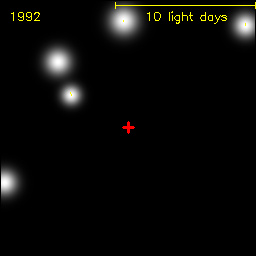
That something is Sag A*. It's an invisible behemoth, made of the extraordinarily dense remains of the birth of our galaxy, juggling entire solar systems the way Jupiter flings asteroids. And for so long, we couldn't even see it.
This shit makes me go fucking crazy. Imagine what else is out there that we don't understand just because we don't have the tools to even know it exists! Not just in space, in any field of scientific study!
It wasn't until the 1990s that we started realizing trees talk to each other, and now we know there's fungal mycelium networks that connect trees across entire continents. Just THIS YEAR we discovered an entirely new ecosystem underneath the hydrothermal vents in the deepest parts of the ocean floor. For most of human history, the existence of planets around other stars was highly debated, and now we've confirmed over 5 thousand of them. We even know what some of their atmospheres are made of!
There's a saying that "the more you know, the more you know you'll never know", and I feel like there's never been a time in history when that's been more true. And it's almost comforting, y'know? The universe is so vast, it feels correct that we shouldn't be able to understand all of its intricacies.
Reality is stranger than fiction, and the reality is there's stuff out there that we don't even have the words to begin to describe. Until we do! And our reward is even more questions!
#space#black holes#Sagittarius A*#M87#Doesn't that gif just give you chills#Whole stars!#Orbiting N O T H I N G#Any time someone mentions black holes I have to pull up this gif and make sure everyone has seen it#My friends are very patient with me#Thanks @literallymechanical for the post suggestion!#spost#space post
320 notes
·
View notes
Text

An image from Hubble of the plasma jet spewing from M87, supermassive black hole at the center Messier 87's galactic core. M87 is the largest and most massive galaxies in the local universe
Image: NASA, ESA, A. Lessing (Stanford University), E. Baltz (Stanford University), M. Shara (AMNH), J. DePasquale (STScI)
#planet alphabet#astronomy#space#galaxy#Messier 87#M87#galactic core#nasa#hubble space telescope#black hole#local universe
26 notes
·
View notes
Text

Hello guys, today we are recording a strange guy who was stalking me
#undertale#undertale au#littletale#dusttale#dusttale sans#littletale sans#black hole#M87#digital art#sans#dustdust sans#sy! littletale
34 notes
·
View notes
Text
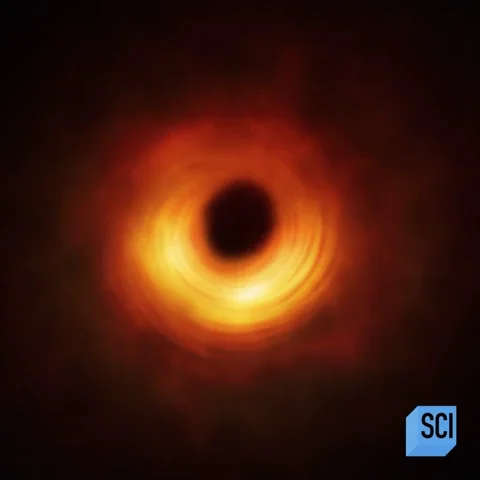
Even black holes help shape the universe.
Everything has its place.
61 notes
·
View notes
Text
Happy Ultraman Day 2023!
I wanted to do something that evoked the same feeling as Kenshi Yonezu’s M87, that euphoric hope and light.
Here’s to another brilliant year of celebrating hope and forming bonds with one another.

128 notes
·
View notes
Text

24 notes
·
View notes
Text
M87 goes insanely hard as a final Outerdust fight theme. Because like. What does Outerdust use for his attacks? Stars, blasters, bones, and whatever the fuck he can find around. What's the next stage of a star, that can't just be classified as just another star? Black holes. What does M87 use(???? heavy doubts but still) / what is M87 themed after? That's right: black holes. To be specific, the M87 black hole, which if I'm not wrong, is a supermassive one. Feel free to correct me on that if I'm wrong.
Maybe it's just something that happens to EVERY monster at high power - their magic evolves along with their appearance. Like, let's say, Toriel. Instead of using those fuckass fireballs(yes I know she's strong, stfu) she'd use fucking meteors?? I can't think of a better idea at the moment lol(normal Tori, not outer) Or let's say Undyne. Instead of those spears, she'd use a single big ass sword - like the one she has in her house, amplified hundredfold. Or Flowey. We have NO idea if he can even gain LV due to his lack of a soul, or what he's like at his max without the souls. For all we know, he could've used his Omega Flowey attacks, albeit weaker for obvious reasons.
LV in general is a VERY underexplained concept. We don't know if it's even possible to gain LV as a monster. Or what it actually does to them. That's why I generally don't like dust type AUs, they're very, underwhelming, I guess is the word I'm looking for. They could be so much more. Go wild, my person on this beautiful green ball of rock! Let your imagination run wild! You don't have to stick to the popular AUs or what the most well known takes are, just make your own takes, make your own ideas, or help out some other guy doing the same, I don't know, just be creative about it! The Undertale multiverse isn't at all limited, you know?
Just, be creative.
4 notes
·
View notes
Text

A little Scooby Doo “fanart” thing heavily based off the following pic of Alaska y los pegamoides (a New Wave group from the early 80’s in Spain 😁😁😁). Retrospectively the staring at the camera reminded me of the intro shot in the original scooby doo where Velma is reading a book and is at the centre. :-)

#Have not posted in a while I am just having my silly summer times :-)#Btw yes I drew Velma as south Asian but not bcos of “Velma 2023” (😵😵) it is simply something I thought looked cute 😁😁#Alaska y los pegamoides#Scooby doo#Daphne Blake#Velma Dinkley#m87 stuff#YES daphne is a communist. YES velma is wearing a pride pin. They are very politically conscious and are enjoying the Movida Madrileña#(Note: I am making all of this up. I like Spanish history :-P)#art#vaphne#sort of !!#EDIT: i have just seen an excellent post discussing the problematic connotations of the sickle communist symbol (USSR and its disgusting —#— history in the countries it colonised and exploited etc.) Just to be clear I am using the flag in this context as a historical detail—#— since in late 1970’s spain Spanish leftism would have used this symbol no problem. I don’t know if that is an adequate contextualisation—#—if anyone who wants to chip in would like to send me an ask pls do :-)
28 notes
·
View notes
Text

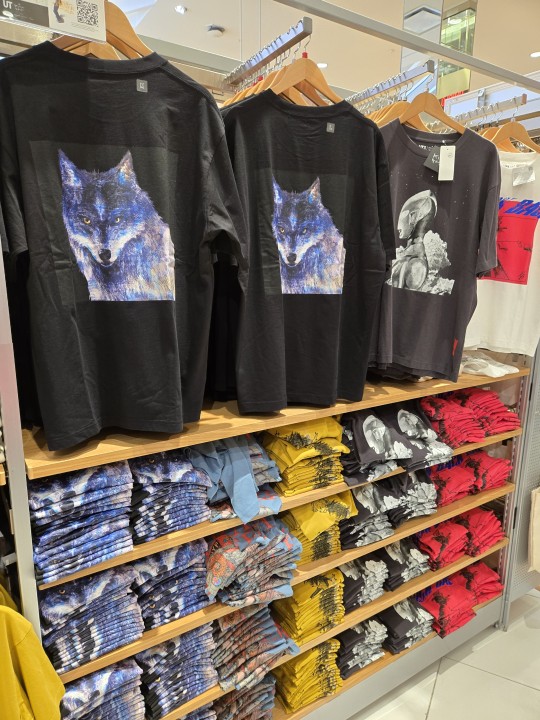

Kenshi Yonezu 2024 Uniqlo collab display at the Uniqlo store in Disney Springs.
#kenshi yonezu#uniqlo#jpop#my husband got an M87 ultraman shirt#i already ordered the shirts i wanted online
5 notes
·
View notes
